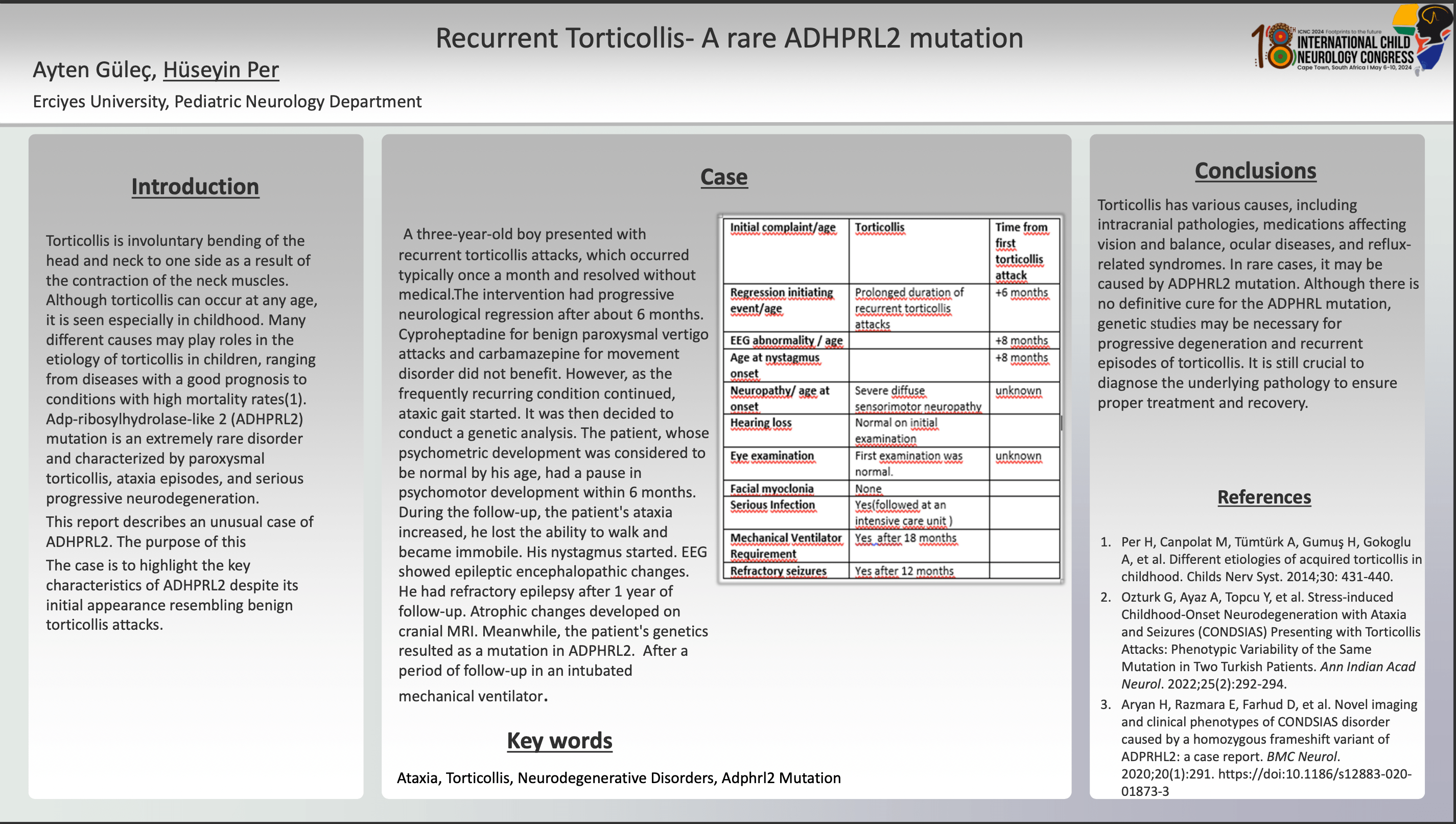Recurrent Torticollis- A rare Adphrl mutation
A three-year-old boy presented with recurrent torticollis, which occurred typically once a month and resolved without medical intervention had progressive neurological regression after about 6 months. However, as the frequently recurring condition continued, ataxic gait started. It was then decided to conduct a genetic analysis. Cyproheptadine for benign paroxysmal vertigo and carbamazepine for movement disorder did not benefit. The patient, whose psychometric development was considered to be normal in accordance with his age, Had a pause in psychomotor development within 6 months. During the follow-up, the patient's ataxia increased, he lost the ability to walk and became immobile. His nystagmus started. EEG showed epileptic encephalopathic changes. He had refractory epilepsy after 1 year of follow-up. Atrophic changes developed on cranial MRI. Meanwhile, the patient's genetics resulted as a mutation in ADPHRL2. After a period of follow-up in an intubated mechanical ventilator. This report describes an unusual case of Adphrl. The purpose of this case is to highlight the key characteristics of Adphrl, despite its initial appearance resembling benign torticollis attacks.
Ayten GULEC
Turkey
Hüseyin PER
Erciyes Univercity
Turkey

Hüseyin PER
Erciyes Univercity
Turkey